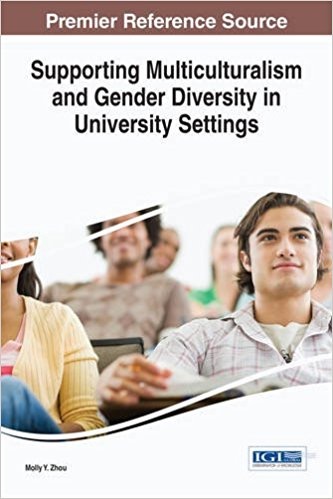online teaching
Select an item by clicking its checkbox
I spent most of my early teaching online trying to figure out how to make key aspects of residential teaching and learning—interactive lecturing, organic discussion, respect for diversities—possible in online contexts. I’ve sometimes wondered: “Will teaching online at some point begin to enhance what I think I ...
George Bernard Shaw, recipient of the 1925 Noble Prize in Literature and award-winning Irish playwright, famously said: “The single biggest problem in communication is the illusion that it has taken place.” As I reflect back on my years of online instruction, I confess: I’ve made this mistake. I often assumed ...
Last year, my university offered online instructors two video tools on a trial basis: Flipgrid and VoiceThread. While VoiceThread’s features did not suit the classes on my schedule, I might incorporate it with advanced students in the future. Flipgrid, a Minneapolis-based educational startup (acquired in mid-2018 by Microsoft), uses ...
"We are all wanderers on this planet.”[1] In my wanderings through the written word over the last month, I met the American poet Robert Lax (1915-2000). For a time his greatest claim to fame was his deep and lasting friendship with the Trappist monk Thomas Merton, yet Lax’s contributions ...

Supporting Multiculturalism in Open and Distance Learning Spaces
Date Reviewed: January 18, 2019
Globalization directly affects all spheres of human activity. Higher education is no exception. Teachers are encouraged to engage emerging technologies and devices in the practice of their teaching with the hope of advancing student learning. The popularity of distance learning is one example of globalization’s reach. Anyone with an Internet connection can pursue higher education. Boundaries and barriers to education are easily crossed through Internet technology. Cooperation across international higher educational boundaries fosters new cooperation among faculty and raises questions about what connotes learning in diverse cultural contexts. Supporting Multiculturalism in Open and Distance Learning Spaces by Elif Toprak and Evrim Genc Kumtepe provides a detailed overview of contemporary cultural issues and complexities in distance education. The book helps teachers, researchers, scholars, and policymakers approach global education from a variety of cultural perspectives.
The book is divided into three sections. Section 1, “Cultural Issues in Management and Global Distance Education,” describes the practical experience the authors gained when working in open or distance education environments. For example, this section covers such topics as the influence of gender on educational policies, the role of quality assurance, and the relationship between cultural perspectives and efficient distance learning. Section 2, “Cultural Issues in Theory and Technology,” looks at close cooperation between education, culture, and technology, starting from the rise of the modern digital era to contemporary contexts. It emphasizes how important it is for the educators to “effectively internalize the premodern, modern, and postmodern eras” (1) or risk either losing a necessary contact with their students or misjudging their conduct and aspirations. The important role of virtual culture and culturally-sensitive instructional design principles is foregrounded in Section 3, “Cultural Issues in Instructional Design and Communication.” For example, “Culturally Sensitive Instructional Design Principles for Online Learning Environments,” explores different components of culture in the learning space, analyzes Hofstede’s Theory of Cultural Dimensions, and evaluates other cultural frameworks and their application in distance learning.
Supporting Multiculturalism in Open and Distance Learning Spaces is organized to share experiences and find efficient ways to nurture multiculturalism in learning environments. The book will interest both practitioners and scholars as it contains useful information on theoretical approaches to open and distance learning spaces, analysis of relevant studies, and practical advice on how to utilize various aspects of global education. The three sections with their specific foci enable readers to quickly surf the book without having to read every chapter. Each section contains a detailed reference list of literature, which is also an essential benefit of the book.



